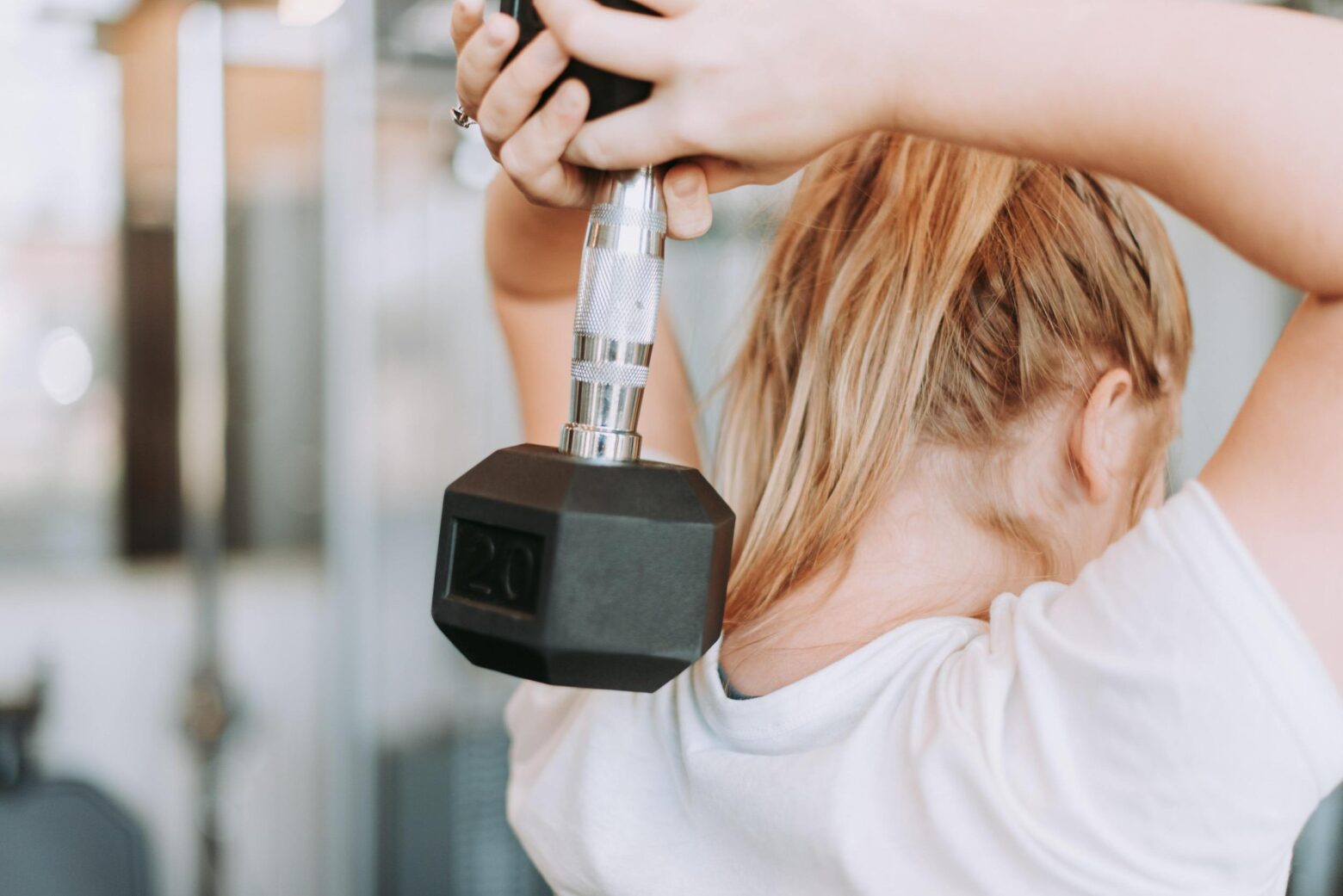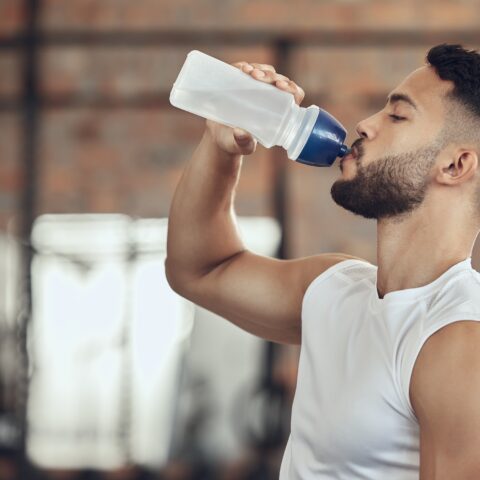Speeding Up Your Metabolism

A fast metabolism has wide appeal to modern humans – though it is exactly what our hunter-gatherer ancestors avoided to survive during periods of food scarcity. We are genetically designed to store extra calories, so what you feel is a sluggish metabolism, is actually a life saving measure to buy time to find your next meal.
In times of food scarcity (or self-inflicted calorie restriction), insulin-stimulated glucose uptake by tissues is reduced, which prevents the body from relying on protein from muscle tissue as a product for endogenous glucose production.1 This process provided hunter-gatherers the ability to endure famine by retaining more muscle mass to support the physical demands of fleeing from predators and fruitful hunting. Individuals with metabolisms effective at utilizing proteins, carbohydrates and fats have a genetic advantage. When you avoid calorie restriction, you stop encouraging your body to store reserves easily.2
Metabolism isn’t all about burning all of the calories you eat in order to stay thin. It accounts for numerous biochemical reactions that occur in each cell of the body required for basic survival, called basal metabolism. The basal metabolic rate (BMR) accounts for 70% of the calories you need at rest to:
- circulate blood
- contract muscles
- digest food and nutrients
- maintain body temperature
- support the functions of the brain and nervous system 3
In addition to BMR, thermogenesis (food processing) and physical activity, determine overall caloric needs. Food processing accounts for 100 calories on average, while physical activity provides the most variability, ranging from 15-35% of your total energy expenditure. BMR slows 3-5% per decade after age 30, which can be attributed to the loss of lean body mass that naturally occurs with age.4
The key to boosting the resting metabolic rate appears linked to the one element we can control: building and maintaining strong skeletal muscles, thus preserving lean body mass.5 In nonobese individuals, skeletal muscle comprises 40% of body weight,6 and can account for 20-30% of the total resting oxygen uptake.7
Resistance training
Researchers found an extra 100 calories per day were burned after 6 months of resistance training.8 Body weight exercises like pushup and pull-ups can be just as effective as lifting weights to stress muscles enough to build strength.9 As a long term strategy, heavy-resistance strength training programs increase resting metabolic rates (RMR) by increasing lean body mass, sympathetic nervous system activity,10 and insulinaction.11
Cardiovascular training
Aerobically trained individuals tend to have a higher RMR than those who are untrained.12 An average increase in RMR of 129 calories per day has been shown with cardio exercise 3-5 days per week, for 20-45 minutes, for 16 months.13 Metabolic adaptations associated with traditional aerobic exercise training correlate with improved insulin action14 and glycemic control.15 Insulin resistance is linked to metabolic disorders,16 and performing moderate to vigorous intensity aerobic and resistance exercise for several hours per week can enhance insulin sensitivity.17,18
“After burn” boost
Excess post-exercise oxygen consumption (EPOC), also called the “after burn effect,” restores the body to its resting state. RMR has been shown to increase for up to 38 hours post-exercise19 contributing to a greater overall calorie expenditure than would be measured without exercise. The EPOC effect is dependent on the intensity and duration of exercise,20 with the greatest effect occurring following high intensity exercise.21 To further boost the overall effect of energy expended post workout, intermittent intervals can be performed throughout the day, as opposed to performing only one continuous period of exercise.22
Physical activity that mimics the movements of hunter-gatherers offers many metabolic advantages, in addition to purely burning calories. Whether your metabolism is fast or slow, you can make vital improvements through a targeted fitness program for optimal performance.
References
[1] Carey, Andrew L., et al. “Interleukin-6 increases insulin-stimulated glucose disposal in humans and glucose uptake and fatty acid oxidation in vitro via AMP-activated protein kinase.” Diabetes 55.10 (2006): 2688-2697.
[2] Summermatter, Serge, et al. “Thrifty metabolism that favors fat storage after caloric restriction: a role for skeletal muscle phosphatidylinositol-3-kinase activity and AMP-activated protein kinase.” The FASEB Journal 22.3 (2008): 774-785.
[3] Tortora, Gerard J., and Bryan H. Derrickson. Principles of anatomy and physiology. John Wiley & Sons, 2008.
[4] Hunter, Gary R., John P. McCarthy, and Marcas M. Bamman. “Effects of resistance training on older adults.” Sports medicine 34.5 (2004): 329-348.
[5] Wade, 0. L., and J. M. Bishop. 1962. Cardiac Output and Regional Blood Flow. Blackwell Scientific Publications, Oxford, UK.
[6] Owen, 0. E., G. A. Reichard, Jr., G. Boden, M. S. Patel, and V. E. Trapp. 1978. Interrelationships among key tissues in the utilization of metabolic substrate. Adv. Mod. Nutr. 2:517-550.
[7] Wade, 0. L., and J. M. Bishop. 1962. Cardiac Output and Regional Blood Flow. Blackwell Scientific Publications, Oxford, UK.
[8] resistance training. After 6 months, subjects had increased their RMR and were burning an extra 100 calories per day.
[9] Kraemer, William J., et al. “American College of Sports Medicine position stand. Progression models in resistance training for healthy adults.” Medicine and science in sports and exercise 34.2 (2002): 364-380.
[10] Pratley, R., et al. “Strength training increases resting metabolic rate and norepinephrine levels in healthy 50-to 65-yr-old men.” Journal of Applied Physiology 76.1 (1994): 133-137.
[11] Miller, John P., et al. “Strength training increases insulin action in healthy 50-to 65-yr-old men.” Journal of Applied Physiology 77.3 (1994): 1122-1127.
[12] Poehlman, Eric T., et al. “Resting energy metabolism and cardiovascular disease risk in resistance-trained and aerobically trained males.” Metabolism41.12 (1992): 1351-1360.
[13] Potteiger, Jeffrey A., et al. “Changes in resting metabolic rate and substrate oxidation after 16 months of exercise training in overweight adults.”International journal of sport nutrition and exercise metabolism 18.1 (2008): 79.
[14] Hickey MS, Weidner MD, Gavigan KE, Zheng D, Tyndall GL, Houmard JA: The insulin action-fiber type relationship in humans is muscle group specific.Am J Physiol 1995, 269(1 Pt 1):E150-154
[15] Houmard JA, Egan PC, Neufer PD, Friedman JE, Wheeler WS, Israel RG, Dohm GL: Elevated skeletal muscle glucose transporter levels in exercise-trained middle-aged men.
Am J Physiol 1991, 261(4 Pt 1):E437-443.
[16] Bonora, Enzo, et al. “Prevalence of insulin resistance in metabolic disorders: the Bruneck Study.” Diabetes 47.10 (1998): 1643-1649.
[17] Stiegler, Petra, and Adam Cunliffe. “The role of diet and exercise for the maintenance of fat-free mass and resting metabolic rate during weight loss.”Sports Medicine 36.3 (2006): 239-262.
[18] Babraj, John A., et al. “Extremely short duration high intensity interval training substantially improves insulin action in young healthy males.” BMC Endocrine Disorders 9.1 (2009): 3.
[19] Schuenke, Mark D., Richard P. Mikat, and Jeffrey M. McBride. “Effect of an acute period of resistance exercise on excess post-exercise oxygen consumption: implications for body mass management.” European Journal of Applied Physiology 86.5 (2002): 411-417.
[20] Schuenke, Mark D., Richard P. Mikat, and Jeffrey M. McBride. “Effect of an acute period of resistance exercise on excess post-exercise oxygen consumption: implications for body mass management.” European Journal of Applied Physiology 86.5 (2002): 411-417.
[21] Bahr, Roald, and Ole M. Sejersted. “Effect of intensity of exercise on excess postexercise O 2 consumption.” Metabolism 40.8 (1991): 836-841.
[22] Laforgia, Joseph, et al. “Comparison of energy expenditure elevations after submaximal and supramaximal running.” Journal of Applied Physiology 82.2 (1997): 661-666.
Stephanie Vuolo
Stephanie Vuolo is a Certified Nutritional Therapist, an American College of Sports Medicine Personal Trainer, and a Certified CrossFit Level 1 Coach, and mother.
More About The Author




